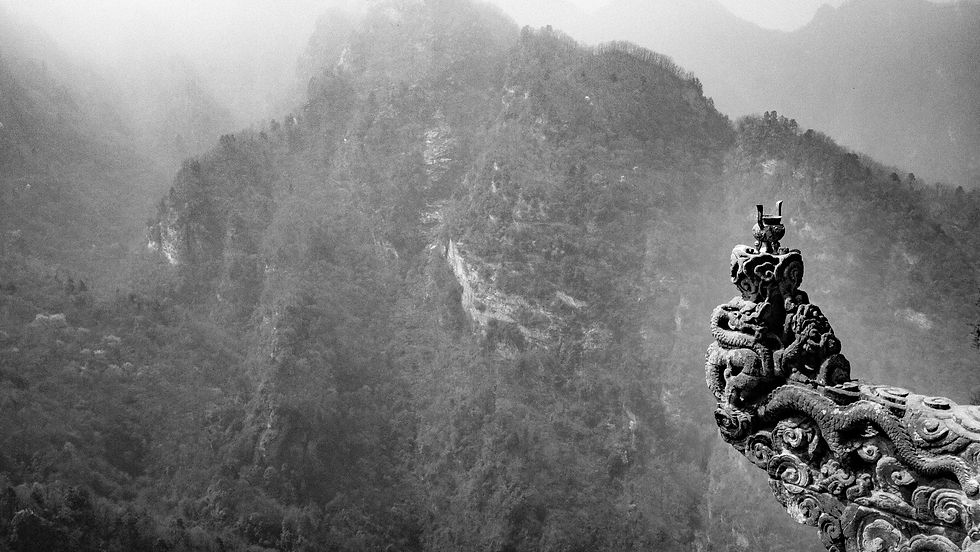Watching Fireflies on a Summer Night 京都 ホタルと夜さんぽ
- Robin Yong

- Jun 19, 2023
- 3 min read
Updated: Jan 14, 2024

Inspiration for the photo project came from "Thirty-two Aspects of Customs and Manners" - a series of 32 prints was published by Tsunashima Kamekichi in 1888. It depicts a chronological survey from the Kansei era (1789-1800) to the Meiji era (1860-1912) of women of different backgrounds and occupations, each associated with a particular mood or character trait.
One of the prints showed a geisha catching fireflies.

Hotaru (fireflies) can be spotted throughout the Japanese countryside in summer, mainly in the month of June. These small glowing insects, which live along clear streams and rivulets, are generally unafraid of humans and can be easily caught. During the Edo period (1603 -1868), lavish firefly catching parties were held along the riverbanks and in boats, to take advantage of the cool evening breezes. However by 1924, fireflies were made a protected species in many parts of Japan due to a rapid decline in their numbers.
In ancient Japan, the night-flies emit so brilliant a light and are so beautiful that ladies go out in the evenings and catch the insects for amusement, as may be seen represented on Japanese woodblock prints and paintings. They imprison them in tiny cages made of bamboo threads, and hang them up in their rooms or suspend them from the eaves of their houses. At their picnic parties, the people love to sit on August evenings, fan in hand, looking over the lovely landscape, spangled by ten thousand brilliant spots of golden light. Each flash seems like a tiny blaze of harmless lightning.
One of the species of night-flies, the most beautiful of all, is a source of much amusement to the ladies. Hanging the cage of glittering insects on their verandahs, they sit and watch the crowd of winged visitors attracted by the fire-fly’s light.
Tayū (太夫) are the highest class of traditional courtesan in Japan. Though technically the highest class of oiran, a general term for the highest-ranking courtesans, tayū were distinguished historically from other oiran due to their intensive training from a young age in numerous traditional artforms, and the fact that they did not engage in sex work, unlike courtesans below their rank.
Tayū were known for their training in Japanese tea ceremony, kōdō, ikebana, Japanese calligraphy, poetry, dance, singing, and the playing of traditional instruments, such as the koto.
Tayū differed from lower ranks of oiran by the social class of their customers.
Maiko and Geiko originate from the culture of the town's people, it began with young girls dancing and playing instruments to attract tourists and business people at tea houses.
Oiran were the top rank person of women working at Red light districts, and Tayū is the top rank of women entertainers though oiran do have a similar attire to Tayū. On the other hand, Tayū originate from the culture of the nobility and they were the only entertainers allowed to attend the Emperor's banquet.
Traditionally, tayū catered for the uppermost echelons of society, including the nobility and the imperial court. Tayū were recognised as a group in the beginning of the Edo period. Due to the limited size of their clientele, they were never numerous; during their peak there were approximately 40 tayū working in Kyoto in the Shimabara district.
Tayū have survived into the modern day in Shimabara, Kyoto, having been allowed to continue practising the cultural and performing arts traditions of their profession following the introduction of the Prostitution Prevention Law in 1957; they were declared a "special variety" of geisha.
Aoi Tayū and I have been chatting for a few months before the photo session. And when I finally came back to Kyoto in summer, Aoi Tayū showed me a private garden where the fireflies have been abundant.
The location is Aoi Nanzenji Bettei Kangetsutei. It features a private garden by Mr. Jihei Ogawa VII, a gardener who has worked on numerous scenic spots such as Heian Jingu Shrine, Maruyama Park, and Murin-an . With Higashiyama Philosopher's Walk as a borrowed scenery, the garden with Lake Biwa Canal brings a pleasant murmuring in silence.
People always talk about the cherry blossom season in spring which lasts for a week or so and the red maple leaves in autumn, which lasts for two weeks. But many have now forgotten the firefly season in summer, which generally lasts for about two weeks and is becoming increasingly difficult to find in cities.
The spiritual meaning of fireflies is light, hope, and change. Fireflies are often seen as a sign of good luck and are believed to be able to guide people through difficult times. Fireflies are also said to be a symbol of rebirth and new beginnings. Fireflies remind us that it's the small, simple things in life that matter the most, to take a moment to slow down, ground ourselves in the moment, and appreciate all these...
Fireflies - they are indeed a beautiful wonder in the night…






Comments